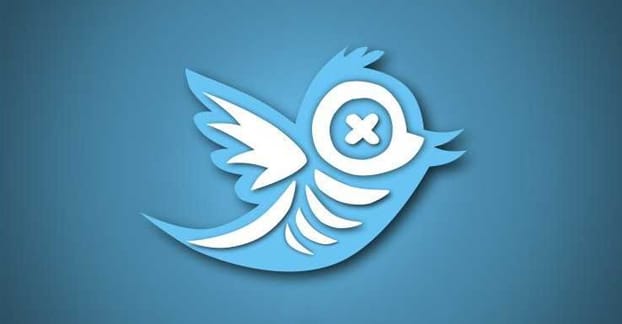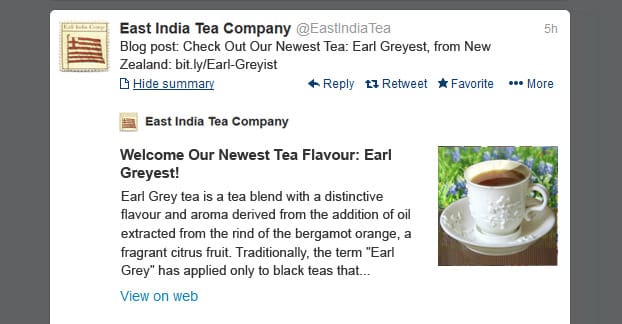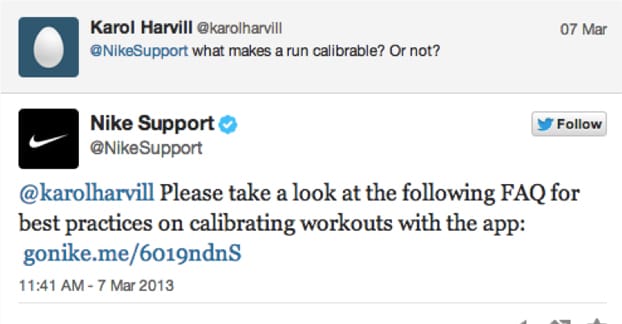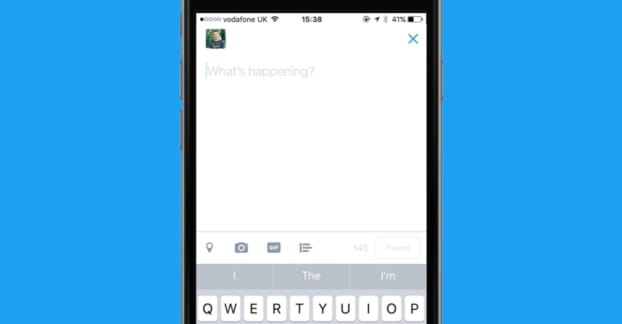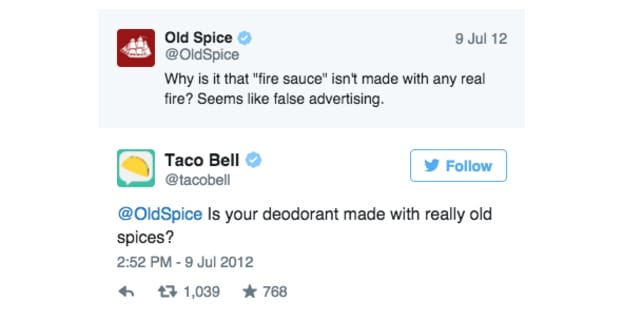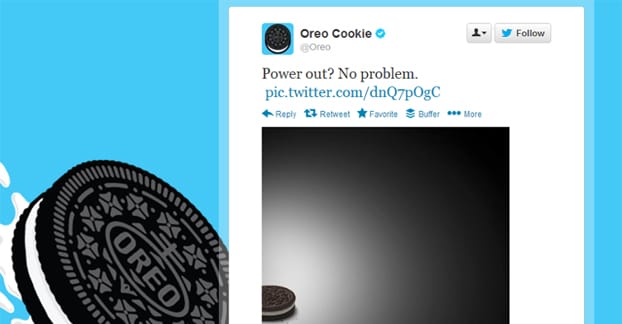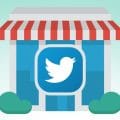These days, it seems like every business has a website and a bunch of social media accounts set up, but it’s actually not true. A lot of physical businesses, those with brick and mortar buildings, tend to forget about the Internet. It’s surprising how often I find a business and ask about their social media, only to discover they have basically nothing.
Well, it really shouldn’t be that surprising. It takes a lot of initial investment to set up a website and fill out some social media profiles. On top of that, as we all know, one of the most important aspects of a social profile is activity. If your profile isn’t active, you’re not gaining customers. If you’re not gaining customers, you’re paying for a social media manager, for social media tools, or even for a website that isn’t doing you any good.
The cycle I see all too often is a small business building a website or registering social media. They then run them according to a mixture of a few half-remembered best practices and tips from the sites themselves, old rumors and misinformation, and sheer gut feeling. When this doesn’t pan out – because they don’t think about things like analytics or split testing improvements – they abandon the website or profiles completely.
What all of this means is that, if you’re able to run a social media account successfully, you’re already heads and shoulders above your competition. Twitter is one such social network, and it has a lot of great benefits for even brick and mortar businesses, if you know what you’re doing. That’s why I’m here; to point you in the right direction.
Defining Your Position
Before you can implement any social media plan on Twitter, you need to know what your situation is and how you can leverage your strengths to cover your weaknesses. Think about some questions that can put everything into perspective.
- Is your brand new or have you been established for quite a while?
- Do you have one location or several, in a small region or large?
- Do you have particular kinds of customers that may or may not be on Twitter?
- Can you satisfy your potential customers with your online presence?
Some of these can be harder than others. A grocery store might have a hard time serving customers online without some kind of home delivery option, which can be expensive to set up. Customer service online can be great, if you have the ability to monitor and solve problems. Social media also becomes extremely complex if you’re trying to manage a large number of franchises or individual locations from one account.
Some of the strategies I’ve compiled below work well for businesses in certain situations but less well in others. Give some thought to whether or not a given strategy will work for you, and if you need to adapt your business to make it happen. More importantly, don’t waste time trying to implement a strategy that isn’t designed for your situation.
Frankly, Twitter isn’t for everyone. There are plenty of businesses that don’t have an appropriate audience presence on the social network, so wasting a bunch of time and money on it can lead to no results. It’s best to be aware of, primarily, whether or not your customers use Twitter, and if you can reach them.
1. Retweet and Feature Positive Endorsements
One great strategy for just about any brand is to implement a form of social listening. Social listening simply means monitoring a social network for cases where your brand or product is mentioned. You can keep an eye out through tailored searches or through third party tools, which can notify you when someone mentions your keywords. This is especially useful for cases where users don’t specifically know you have a Twitter presence, or don’t @mention you for one reason or another.
Whenever a notification comes up that you’ve been mentioned, decide what to do with it. If it’s a question, do your best to answer it. Even if it’s nonsense, do your best to answer it in a humorous way. If it’s criticism with good point behind it, reach out to the customer to address their issue. This ties into tactic number three, as well. Most importantly, if it’s praise of your brand, product, store, or location, like, retweet, and thank the user for their comment.
When you feature a user, users will start to leave more comments in hopes of gaining the social validation that comes with being recognized. It makes them feel better about their decision to shop with you, which builds brand loyalty, and it helps encourage others to follow suit. You can read more about implementing social listening here.
2. Grow Widespread Awareness Through Advertising
This is an ideal technique for companies that are either new to a location, new in general, or new to Twitter. A general awareness campaign means getting as many people as possible aware that you exist.
If you’re a new company in general, you can use Twitter to publish tweets about who you are, what you’re doing, what you’re selling, and what problems you’re looking to address. Your goal is to get information out about your company, to get people interested. Topic-relevant hashtags with insight into customer pain points are crucial here.
If you’re new to a geographic location but you’re an established brand, you can leverage geographic targeting hashtags to reach people in those specific areas, as well as geographic targeting for paid advertising. Both allow you to get one simple message out to local residents: “we’re here now, come and stop in!” You can even offer incentives, like “mention this tweet at checkout for a 10% discount during opening week.”
If you’re new to Twitter but you’re an established brand, you can use the same sorts of techniques to simply build awareness that your account exists. With a physical location, you can couple this with in-store advertising, ranging from audio commercials to a call to action on the receipt you give customers. You can even hand out flyers with your information at checkout.
Paid advertising supplements all of these, and will be quite cheap since you’re aiming for awareness rather than conversions.
3. Maintain a Comprehensive Customer Service Presence
Twitter as a social network is best used for three purposes: political activism, stupid memes, and customer service.
Twitter is one of the fastest social networks in terms of call-and-response. Many companies have found that Twitter is the best way to contact fans. Meanwhile, disgruntled customers have found that the fastest way to get action taken on an issue is to threaten to make it trend on Twitter.
A comprehensive customer service presence on Twitter means being available throughout all business hours – or even around the clock – to answer questions and address issues customers bring up. A lot of brands try to automate this, to mixed results, but I always recommend having at least one person monitor Twitter at basically all times. It’s up to you how much you want to try to automate.
As mentioned above, you essentially want to make yourself available on Twitter as an alternate means of communication to email or phone calls. The number one most important rule for Twitter customer service, though, is to have an empowered employee manning the account. If your customer service guy can do nothing beyond answer simple questions and forward issues to others, or worse, direct users to call instead, you become worse than useless.
4. Offer Benefits to Users on Twitter
Only a certain subset of your in-store customers will be using Twitter. Depending on your audience demographics, it may be a smaller or a larger audience, but it’s still going to be well south of full saturation. Make those users feel special by offering them unique content or discounts.
With Twitter, you can do things like offer a coupon upon mention of Twitter, or even have a Twitter-accessible app designed to give value to users when they use it in store. It’s even better if you can give your app even greater value and functionality; keep users in the cycle. Using the app gives them value, and when they get value out of the app, they keep using it. Regardless of whether they’re getting value from the app or from in-store offers, you keep them engaged with your brand rather than your competition.
5. Post Constant Updates for Anything Relevant
In addition to customer service, you can use Twitter to keep users up to date with anything you need fast awareness. Once you have a following, you can essentially train users that the best place to see updates is your Twitter account.
What kinds of updates? It can be anything, really. If you’re launching a new product or service, you can post about it on Twitter, with days or weeks of build-up to hype it. If you’re offering a discount or starting a sale, you can announce it on Twitter. Likewise, you can announce when a deal is ending a day or so in advance, to remind people to come in to claim it.
Perhaps the best news to broadcast is the worst news; closures and issues. If a sinkhole suddenly appears in your driveway, if a tree falls across your parking lot, if the power goes out in your building, or a fire closes you down, you can keep these updates posted on Twitter. Users can check to find out when you’re back open after catastrophe.
6. Attempt Casual Banter with Other Brands
In the last few years, a lot of brands have been taking to Twitter to engage in banter with one another, as if they’re individuals rather than faceless corporate entities designed to pull every penny possible out of their customer base. Everything from Arby’s roasting their critics and competitors to the cheeky little interactions detailed in this post, they all have a purpose.
It’s not cynical to realize there’s more to it than a little humor. These brands are attempting to go viral. They want this content to be linked, screencapped, and shared. It puts their brand into the minds of people. If even one person sees the joke from KFC or Taco Bell and, later that night, decides they want fried chicken or tacos, it’s a win for that brand.
Of course, this kind of strategy is harder to pull off for smaller brands. It works best when your brand has a persona and a presence to back up your position. This is why you should keep your Brandter as light-hearted as possible. You don’t want a reverse reaction, where larger brands crush you and you go viral simply because of how hard you were owned.
If possible, meet and organize with other local businesses with Twitter accounts and audiences, and script out some interactions. If both sides are involved, you know ahead of time how it’ll go, and you can make an exchange that benefits both sides.
Or just toss an insult at your competition and see what happens. Who knows, maybe something amazing will come of it.
7. Capitalize on Trends and Memes
This one is potentially risky. If you keep an eye on trends and memes circulating throughout Twitter, you can capitalize on them to seem like Just Another User. It’s another way of humanizing your brand, but it’s a bit easier to do than the Brandter. You can find articles about it by looking for “newsjacking“, though it does expand beyond capitalizing on the news to paying attention to social trends and memes.
The risk here is that you’re too slow on the uptake. Memes in particular have a very short lifespan on a site like Twitter. You’ll see something crop up one day, explode to show up every 10th post in your feed for two or three days, and then fade away. If you don’t try to follow up on it for a week, you’re already way too late.

